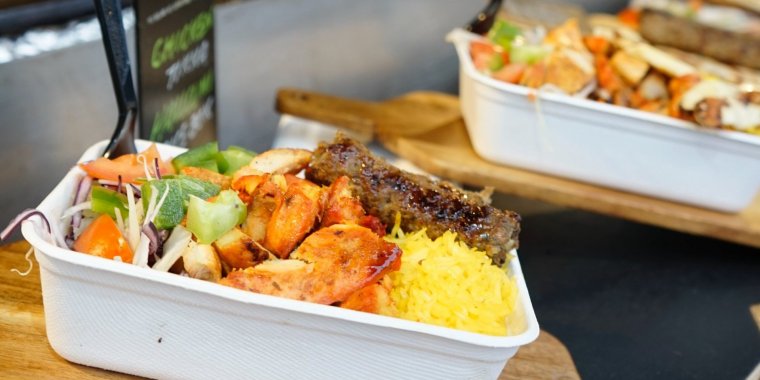| Health / Health News |
Adding a metre between meals boosts vegetarian appeal
Conservationists at the University of Cambridge are investigating ways of “nudging” people towards eating more plants and less meat, to help curb the environmental damage caused by excessive consumption of animal products.

Adding a metre between meals boosts vegetarian appeal. Photo: ihjaaz manarikk/Unsplash
The researchers experimented on customers in the cafeterias of two Cambridge colleges to find out whether the position of vegetarian options influences the uptake of plant-based dining.
They collected and analysed data from 105,143 meal selections over a two-year period, alternating the placement of meat and veg dishes every week, and then changing the pattern to every month.
The researchers found that simply placing veggie before meat in the order of meal options as people entered the serving area did little to boost green eating in one of the colleges.
In the other college, however, the sales of plant-based dishes shot up by a quarter (25.2%) in the weekly analysis, and by almost 40% (39.6) in the monthly comparison.
The difference: almost a metre of added distance between the vegetarian and meat options, with an 85cm gap in the first college compared to a 181cm gap in the second.
“Reducing meat and dairy consumption is one of the simplest and most impactful choices we can make to protect the climate, environment and other species,” said study lead author Emma Garnett, a conservationist from Cambridge’s Department of Zoology.
The latest research follows on from work by Garnett and colleagues published last autumn, which showed that adding an extra veggie option in cafeterias cuts meat consumption without denting overall sales.
Livestock and aquacultures behind meat, fish, dairy and eggs are responsible for some 58% of the greenhouse gas created by global food, and take up 83% of farmland despite contributing to just 18% of the world’s calorie intake.
The experiments were conducted across two colleges – one with 600 students and one with 900 students – where cafeteria customers were presented with vegetarian and meat options in differing orders for weekday lunch and dinner.
College members take a tray, view the meals on offer, and then ask serving staff to dish up their preferred options. Food is purchased by swiping a university card, and the researchers gathered anonymised data on main meal selections only (sandwiches and salads went uncounted).
While the catering managers helped to set the experiments up, the diners remained unaware.
The researchers had expected to see a difference in vegetarian sales through order alone, but it was only in the college with the extra metre – the 181cm gap – between food options that recorded an uptick when arranged “Veg First”.
To confirm the findings, researchers reduced the gap in this cafeteria to just 67cm, and vegetarian sales fell sharply. In fact, with such a small gap, vegetarian dishes fared even worse when put first in line (falling almost 30% compared to “Meat First” days).
“We think the effect of the metre may be down to the additional effort required to seek out meat. If the first bite is with the eye, then many people seem perfectly happy with an appetising veggie option when meat is harder to spot,” said Garnett. (University of Cambridge)
YOU MAY ALSO LIKE





